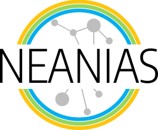Space Sciences are living a revolution, with the advent of new observing facilities that allow for surveying the entire sky with an unprecedented level of detail, and new planetary missions that are fostering the knowledge of the solar system bodies like never before.
In order to make the most of this huge leap forward, space research communities (astrophysicists and planetary scientists) need to find innovative ways to access, share and exploit the data produced by all these instruments and missions. In particular, it is mandatory to develop new ways to visualize large data volumes in an efficient and intuitive manner; to combine imagery from large portions of the sky or the surface of planetary bodies into large scale mosaics that allow for a more comprehensive view of the overall features of the objects under study; and speed up the identification, classification and characterization of astronomical sources by exploiting state-of-the-art machine learning techniques.
This is where NEANIAS comes into play, with the development of cutting edge services that tackle all these challenges from a FAIR (Findable, Accessible, Interoperable, Reproducible) perspective. Built on top of the EOSC ecosystem, the NEANIAS service-oriented architecture aims at providing researchers from diverse fields with the means to carry out their work in the most efficient way while fostering Open Science practices. And this statement, that started as a promise, has just become reality.
After one and a half years of hard work, we are proud to announce the successful onboarding into EOSC of the first two space services, namely:
- ViaLactea, a visual analytics tool that provides seamless, FAIR access to multiple surveys of the Galactic Plane, from the near-infrared to the radio band, being particularly useful for those astronomers interested in studying star formation processes in the Milky Way. See ViaLactea in action in this demo!
- CAESAR, a source finding service that allows for automatically extracting and characterizing compact and extended sources from all-sky surveys, being specially tailored to the ever-increasing needs of the radio continuum surveys of the Square Kilometre Array precursors, like ASKAP and MeerKAT. Check it out!
Having these services already onboarded into EOSC makes them accessible to the research community through the EOSC marketplace. This means that astronomers and space scientists all around the world can now exploit these tools to enrich their workflows and make the most of their data, while contributing to the actual materialization of a fully Open Science EOSC ecosystem.
But this doesn’t end here! We are working to bring new cutting-edge services to the EOSC marketplace, so stay tuned. If you want to be updated about the latest developments regarding NEANIAS Space Services, follow us on our social channels in Twitter, Facebook and Youtube or visit the Space Services portal.
